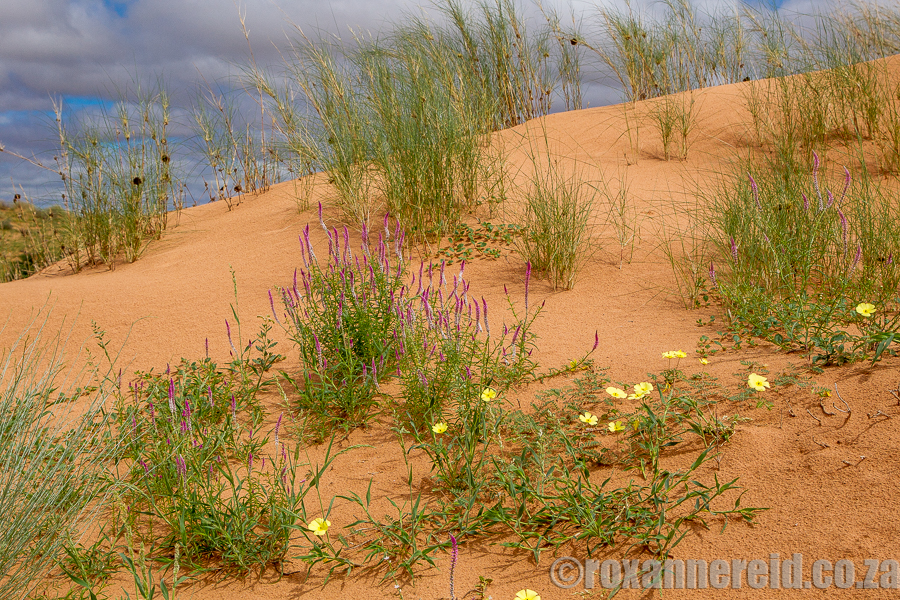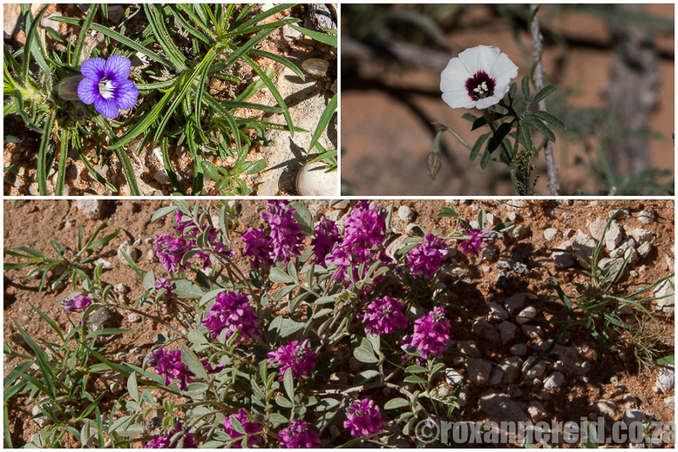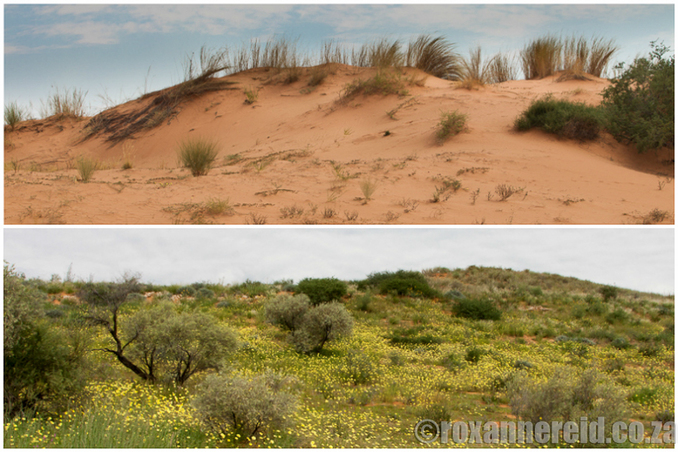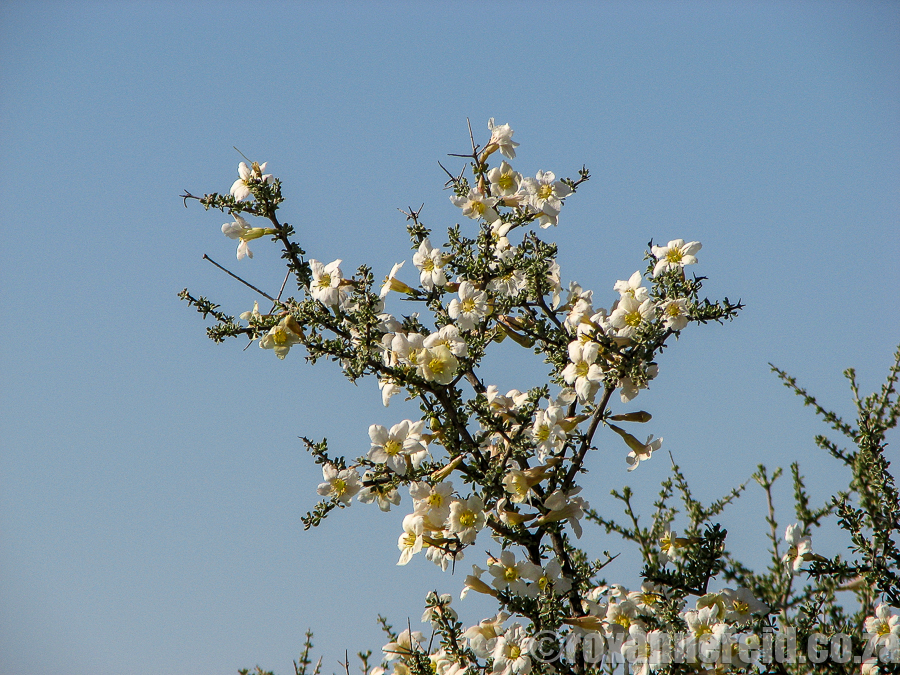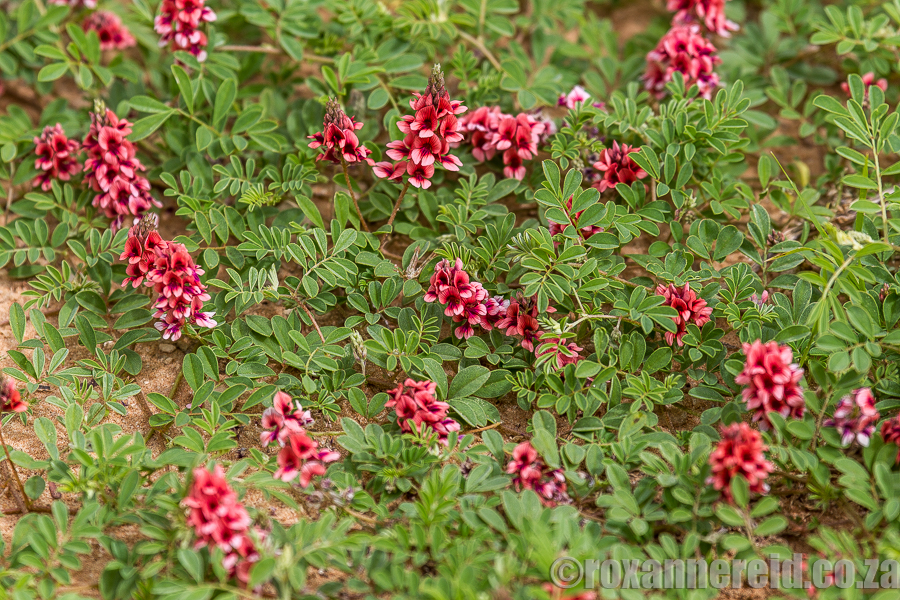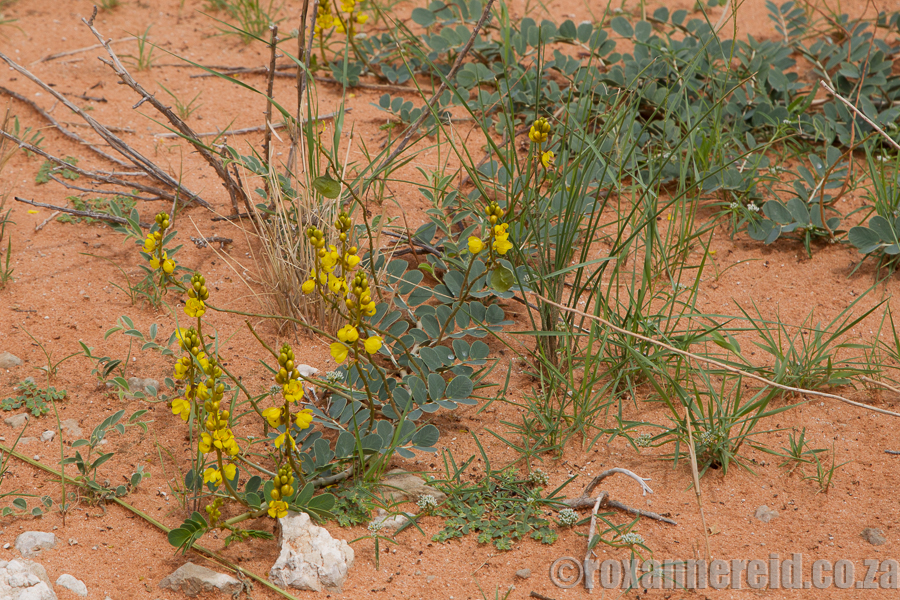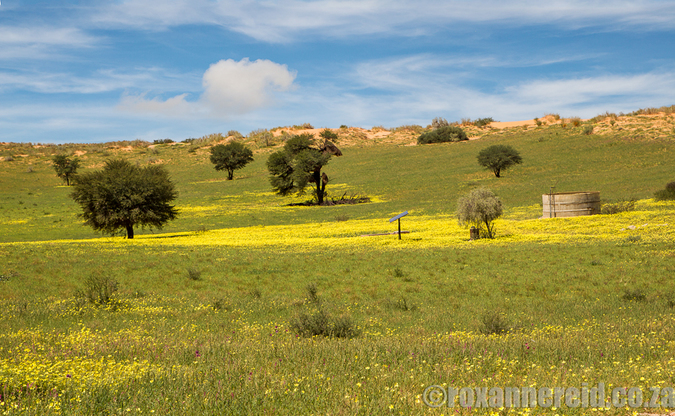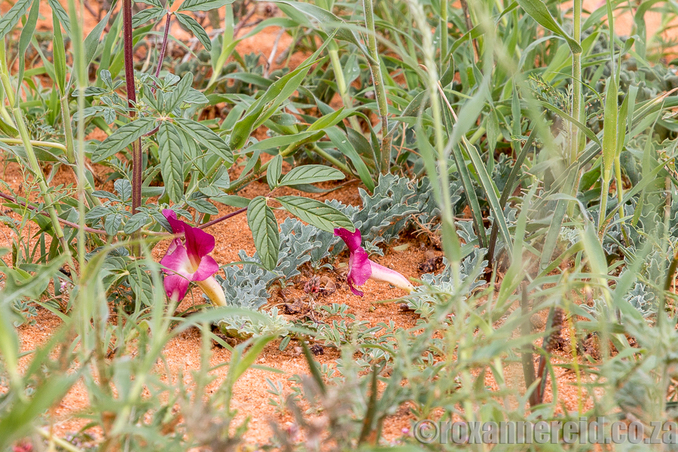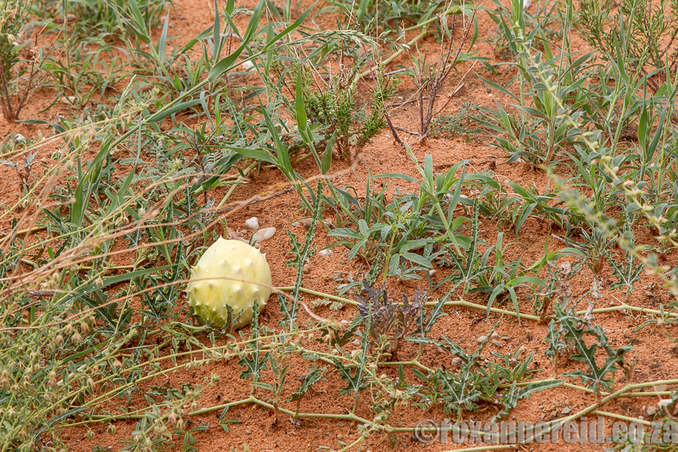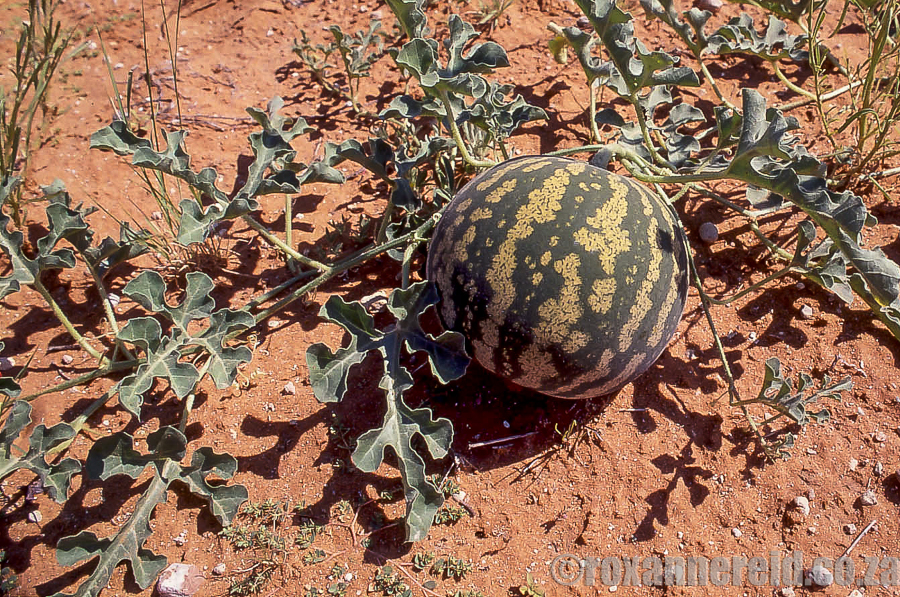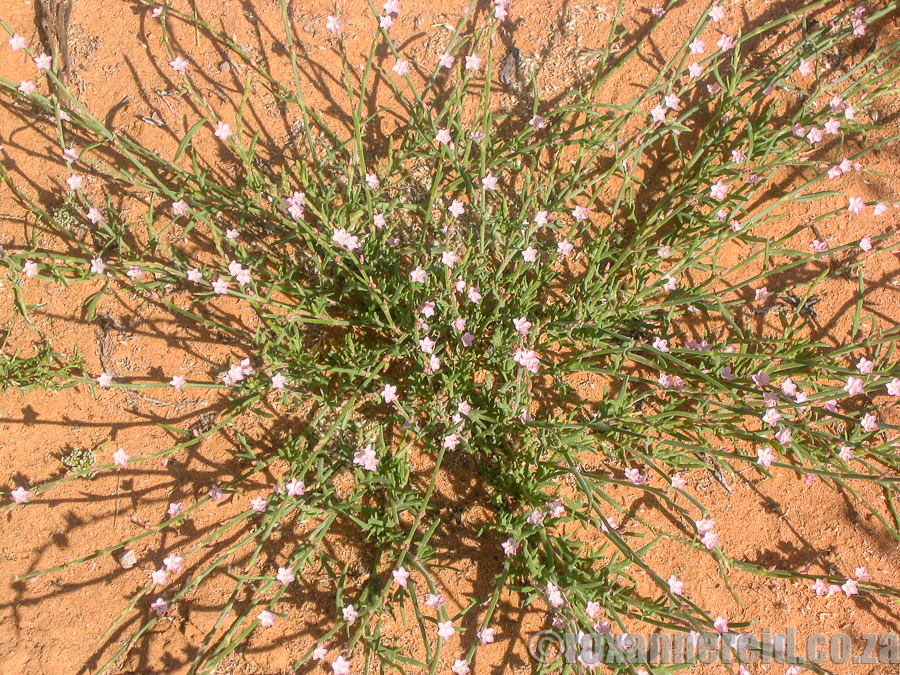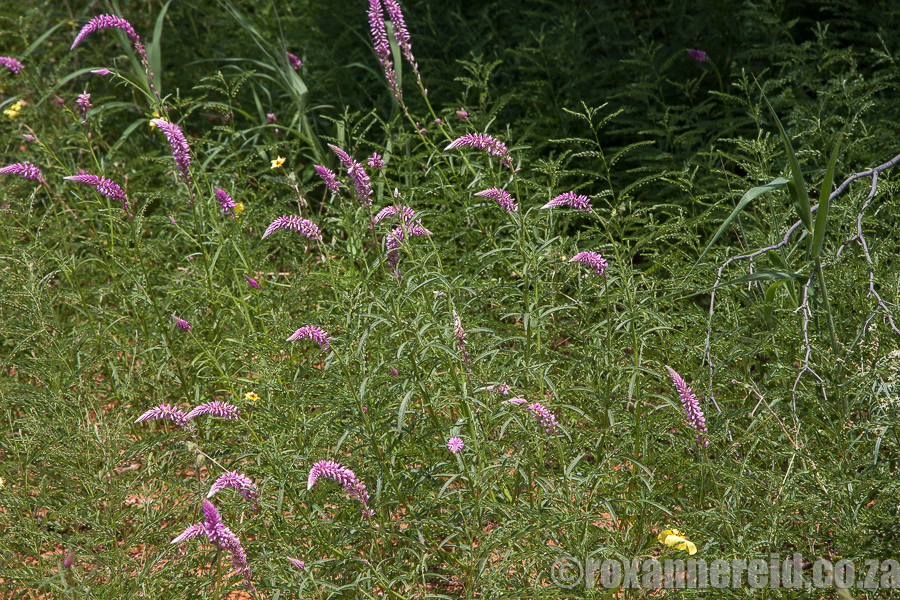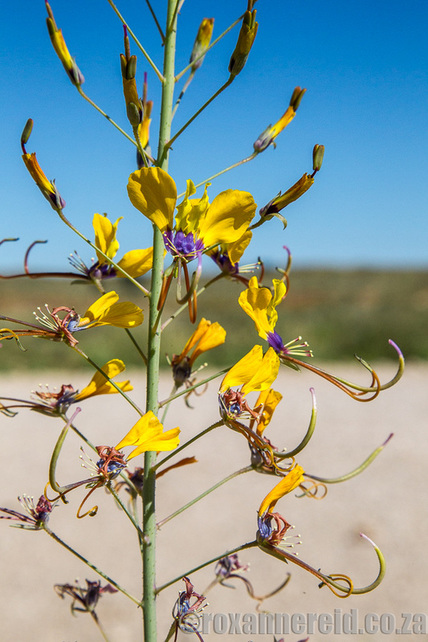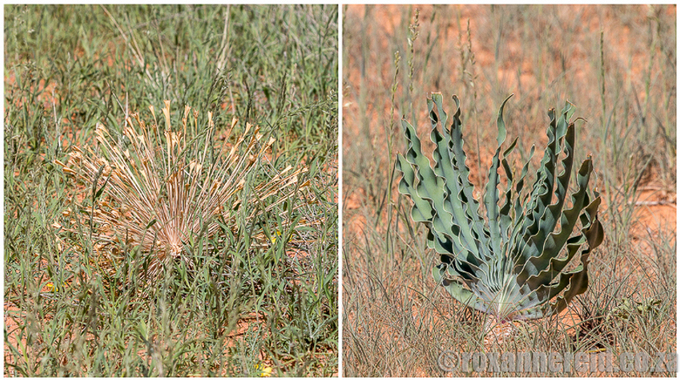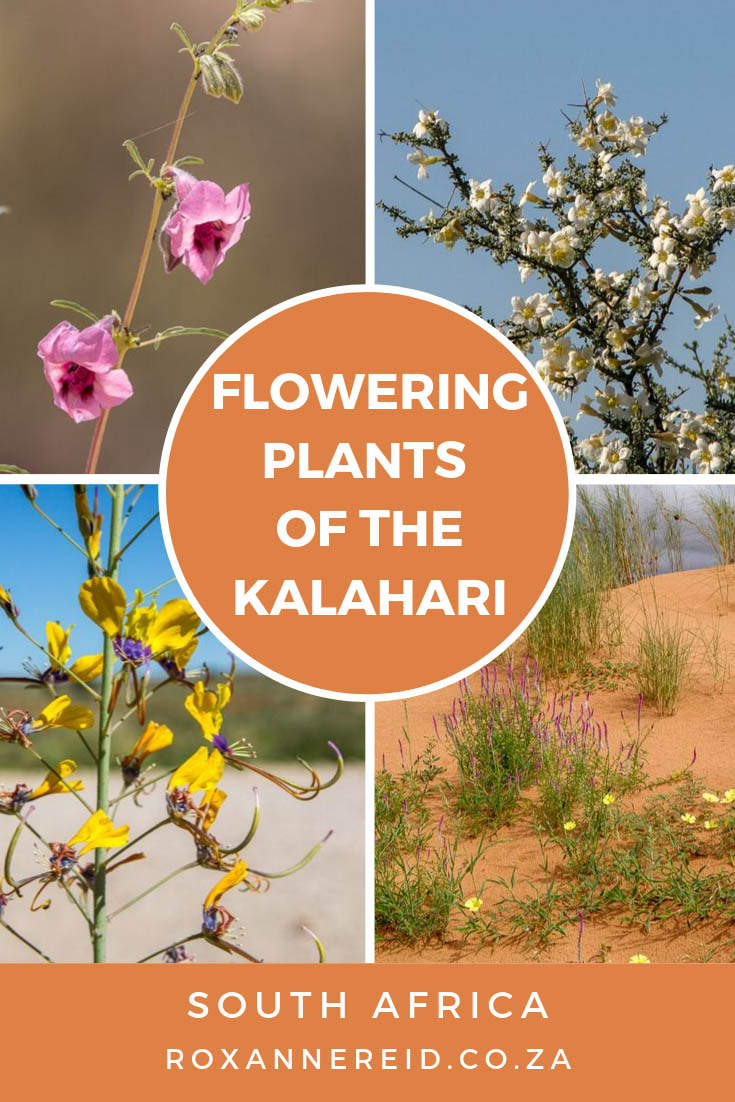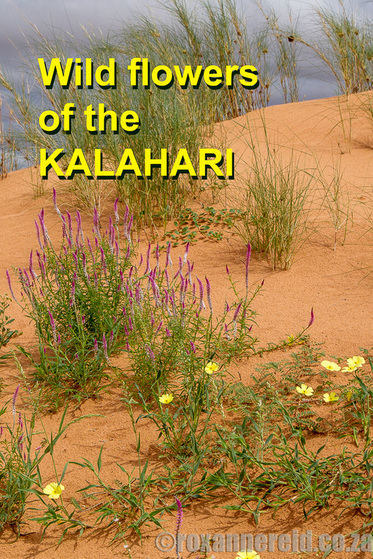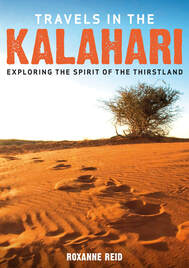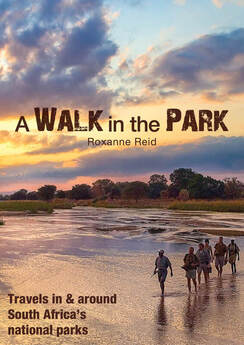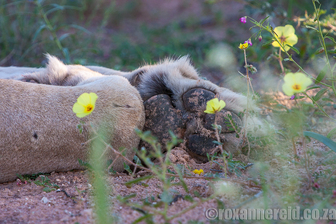
Anyone who tells you that the Kalahari is just red sand and lions either hasn’t visited or simply wasn’t concentrating. In fact, it’s full of fascinating small creatures like whistling rats and barking geckos. After good rain in summer the dunes are dressed in a jacket of green grass and a throng of colourful flowers will just about slap you in the face. This, then, is the Kalahari in bloom.
My copy is dog-eared with use because once you lock down the trees, you start exploring the shrubs. Once you learn some of the shrubs, you want to identify grasses and bulbs and creepers – and so it continues. It has given us endless hours of fun – although I admit we’ve sometimes had to look up the same plants again and again before their identity becomes cemented in our brains.
Afrikaans names can be evocative. Think seeroogblom (sore eye lily), kopseerblom (headache flower), elandsertjie (eland’s pea), duifie doring (dove’s thorn) or withondebossie (white dog bush). Or they’re as simple as schoolboy logic: bloublom (blue flower), soetdoring (sweet thorn) or gifbol (poison bulb).
Have a look at some of these beauties.
Driedoring / three thorn (Rhigozum trichotomum)
Springbokopslag (Indigofera alternans)
Wild senna / swartstormbossie (Senna italica subsp. arachoides)
Devil’s thorn / dubbeltjie (Tribulus zeyheri)
Devil’s claw / duiwelsklou (Harpagophytum procumbens)
Gemsbok cucumber (Acanthosicyos naudinianus)
Tsamma melon (Citrullus lanatus)
Salt of the tortoise / menssuring (Oxygonum delagoense)
Cat’s tail / katstert (Hermbstaedtia fleckii)
Yellow mouse whiskers / oorpynpeultjie (Cleome angustifolia)
Thunderbolt flower / brandboontjie (Sesamum triphyllum)
Bitterkambro (Adenium oleifolium)
Bushman poison weed / gifbol (Boophone disticha)
Still think the Kgalagadi is nothing but lions and red sand? Thought not.
You may also like:
Travels in the Kalahari
Copyright © Roxanne Reid - No words or photographs on this site may be used without permission from roxannereid.co.za
